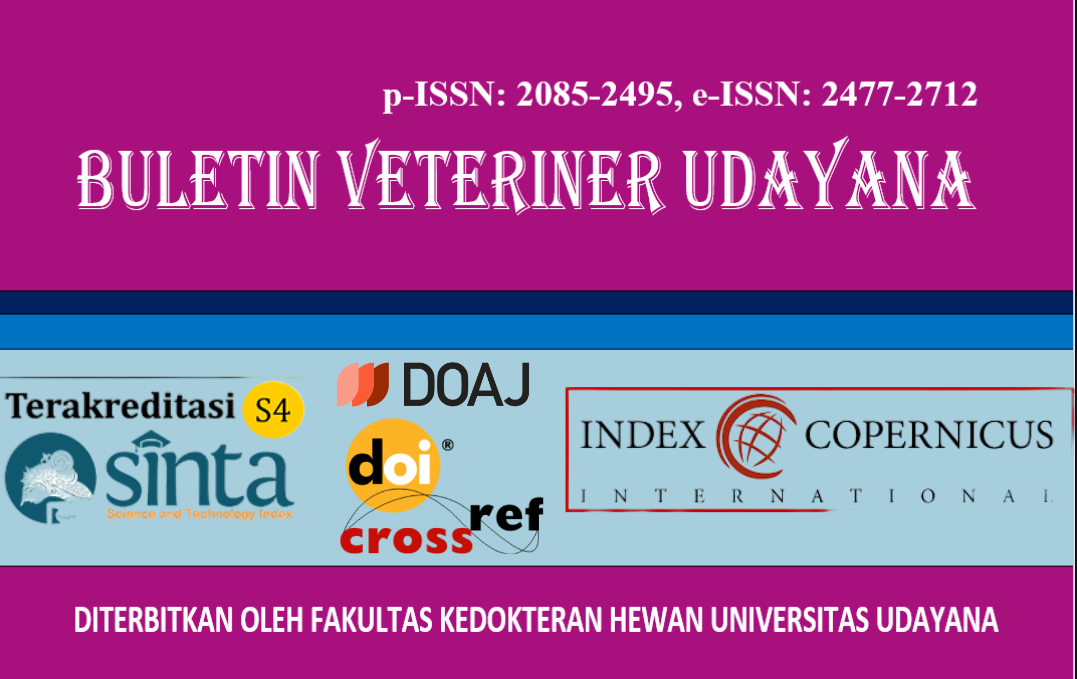RESISTANCE PATTERN OF ANTIBIOTICS ON KLEBSIELLA SPP. FROM FECES OF BALI CATTLE SOLD AT BERINGKIT LIVESTOCK MARKET
DOI:
https://doi.org/10.24843/bulvet.2024.v16.i04.p30Keywords:
Bali cattle, Coliform, Klebsiella spp, antibioticsAbstract
Beringkit Animal Market is one of the largest animal markets in Bali. Which is a place for livestock transactions, especially bali cattle calves, which are usually used as breeds. Bali cattle calves need digestive tract microbes such as bacteria to carry out the digestives process. Klebsiella spp. is a type of coliform bacteria that plays a significant role in the digestive system of bali cattle. This study aimed to determine the presence of Klebsiella spp. and antibiotic resistance patterns in bali cattle marketed at Beringkit Livestock Market. The samples used were rectal swabs from 50 bali cattle. First, swab samples were isolated and identified, starting with isolation on Eosin Methlyne Blue Agar (EMBA), followed by colony characterization and biochemical tests such as Indole Metil Voges Proskauer Citrate (IMViC). Then, the identified Klebsiella spp. colonies were tested for antibiotic resistance patterns using 8 antibiotic discs, including bacitracin, ampicillin, kanamycin, streptomycin, doxycycline, erythromycin, trimethoprim-sulfamethoxazole, and chloramphenicol. The method of examination used the Kirby Bauer antibiotic disc diffusion method. The prevalence of Klebsiella spp. was found to be 6% among 50 cattle at Beringkit Livestock Market. The resistance pattern showed that sample no. 12 was resistant to bacitracin, ampicillin, streptomycin, doxycycline, and erythromycin; intermediate to kanamycin; and sensitive to sulfamethoxazole-trimethoprim and chloramphenicol. Sample no. 33 was resistant to bacitracin, ampicillin, streptomycin, doxycycline, and erythromycin; intermediate to kanamycin; and sensitive to sulfamethoxazole-trimethoprim and chloramphenicol. Sample no. 44 was resistant to bacitracin, ampicillin, streptomycin, erythromycin, and chloramphenicol; intermediate to kanamycin, sulfamethoxazole-trimethoprim; and sensitive to doxycyclin. Sulfamethoxazole-trimethoprim and kanamycin are still suitable for use due to a sensitivity rate of 66% in three Klebsiella spp. samples. However, antibiotics such as bacitrasin, ampicillin, streptomycin, doxycycline, erythromycin, and chloramphenicol should be discontinued due to high resistance rates, and further research is needed to find effective and suitable antibiotics for managing Klebsiella spp. infections.




